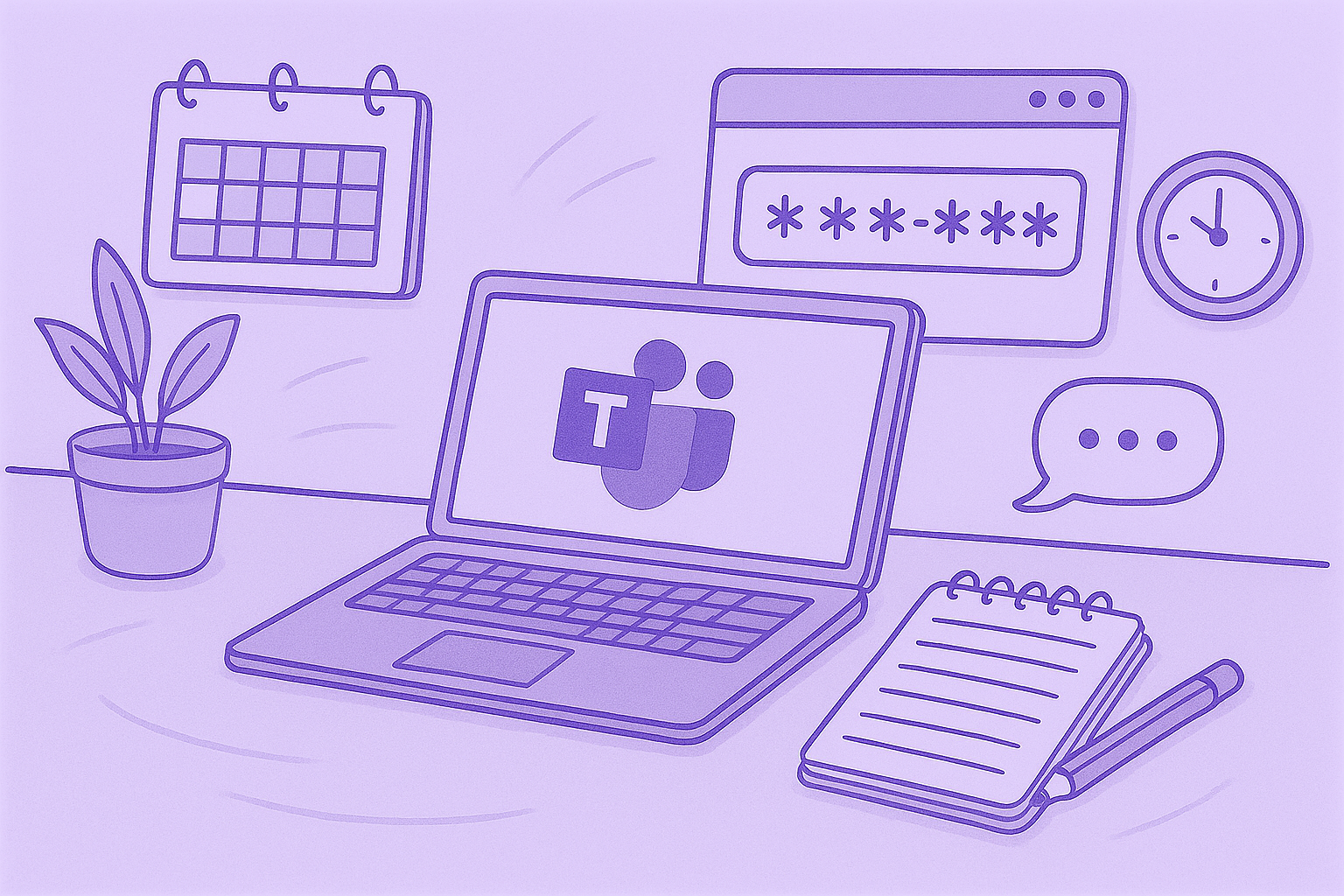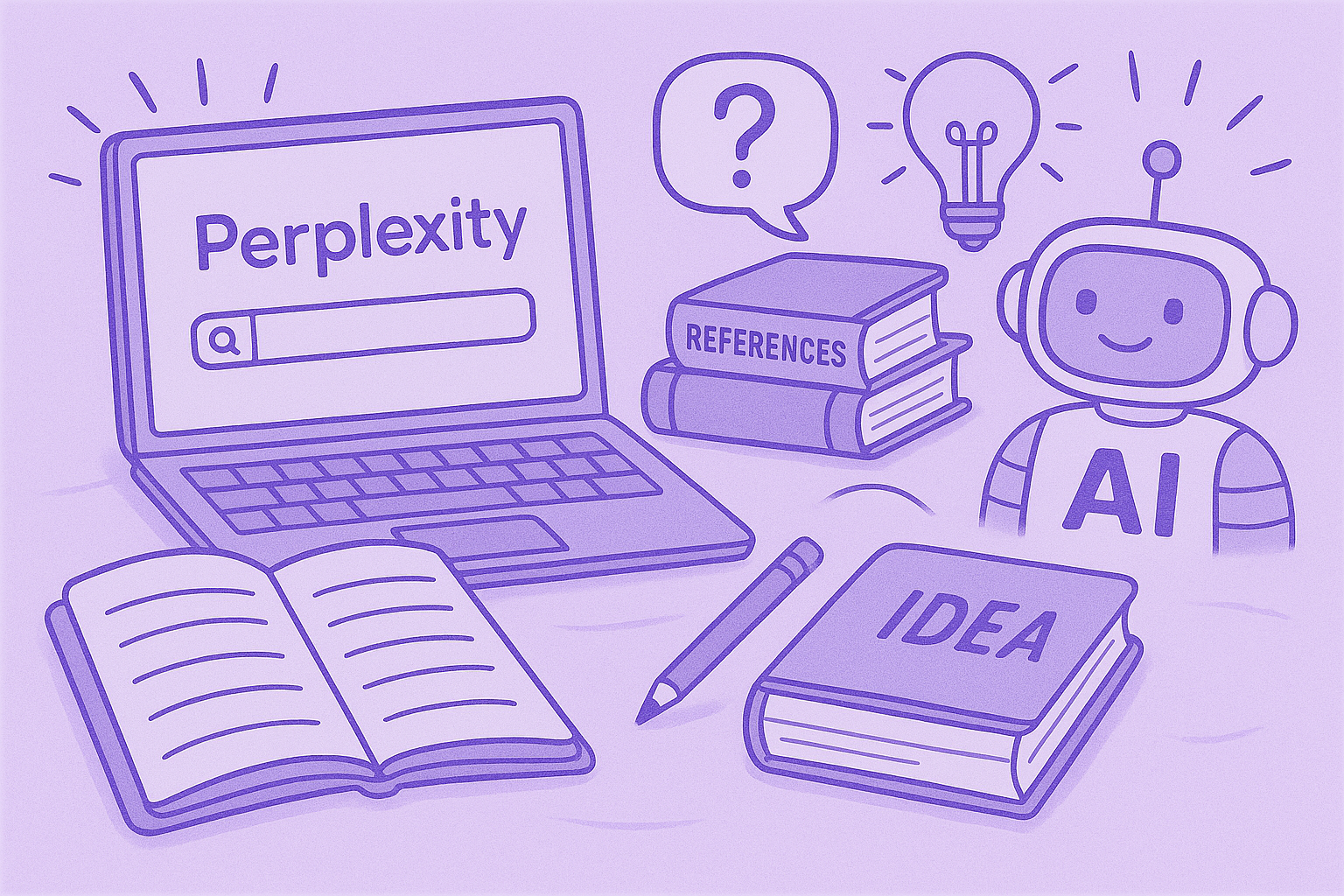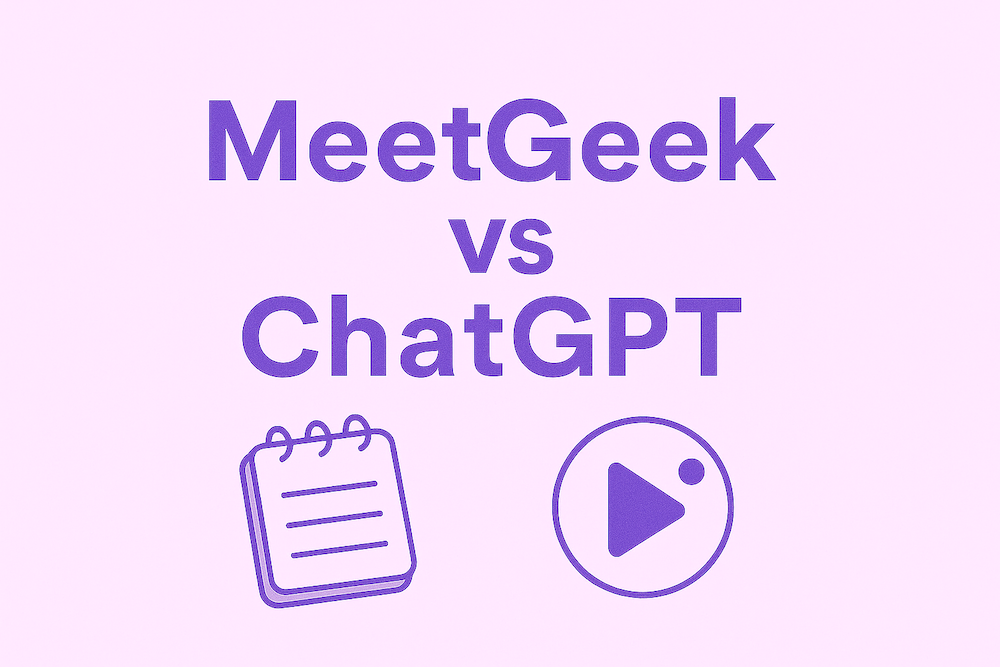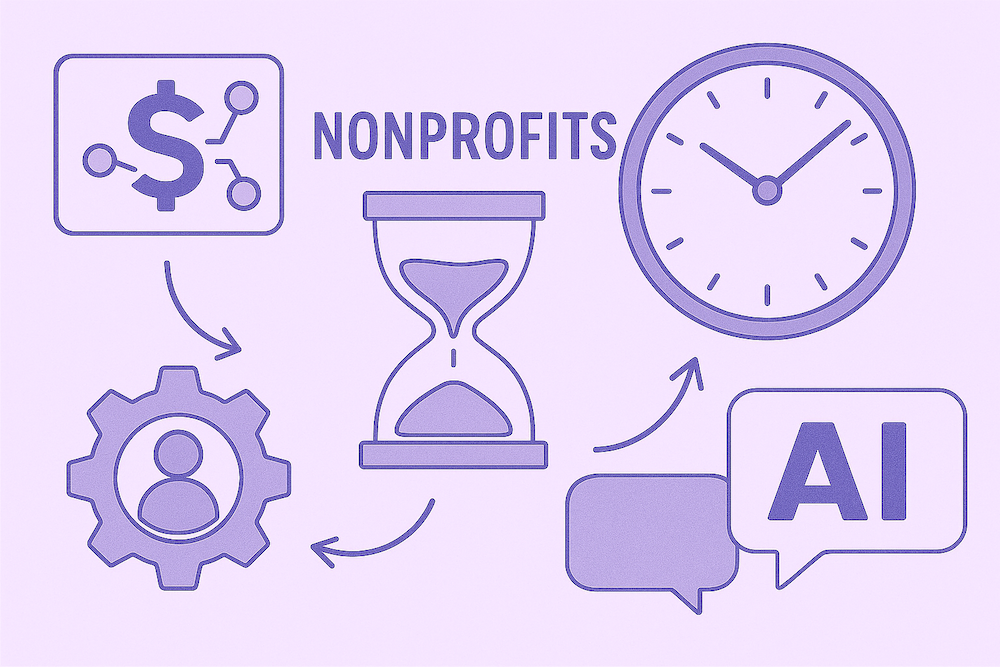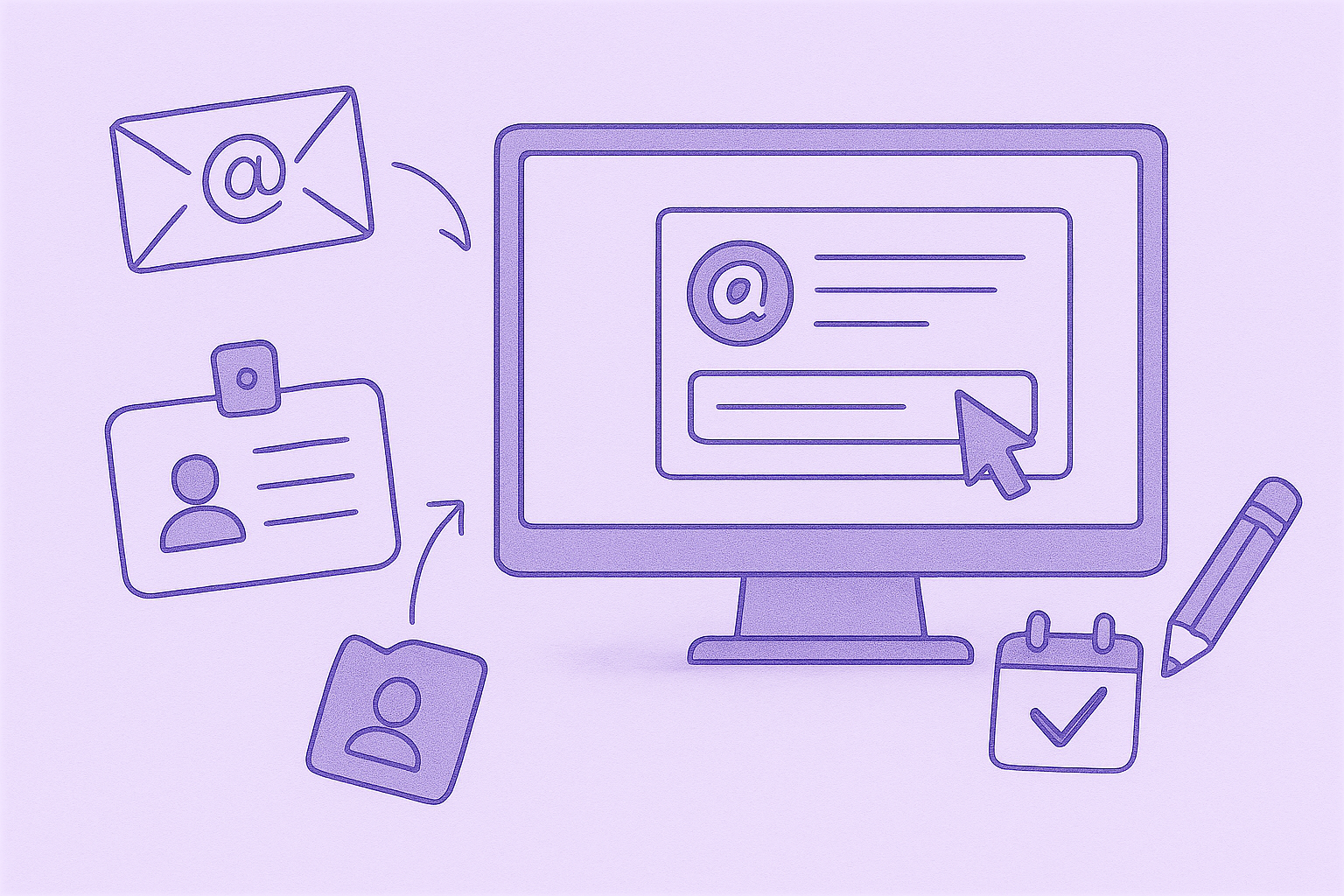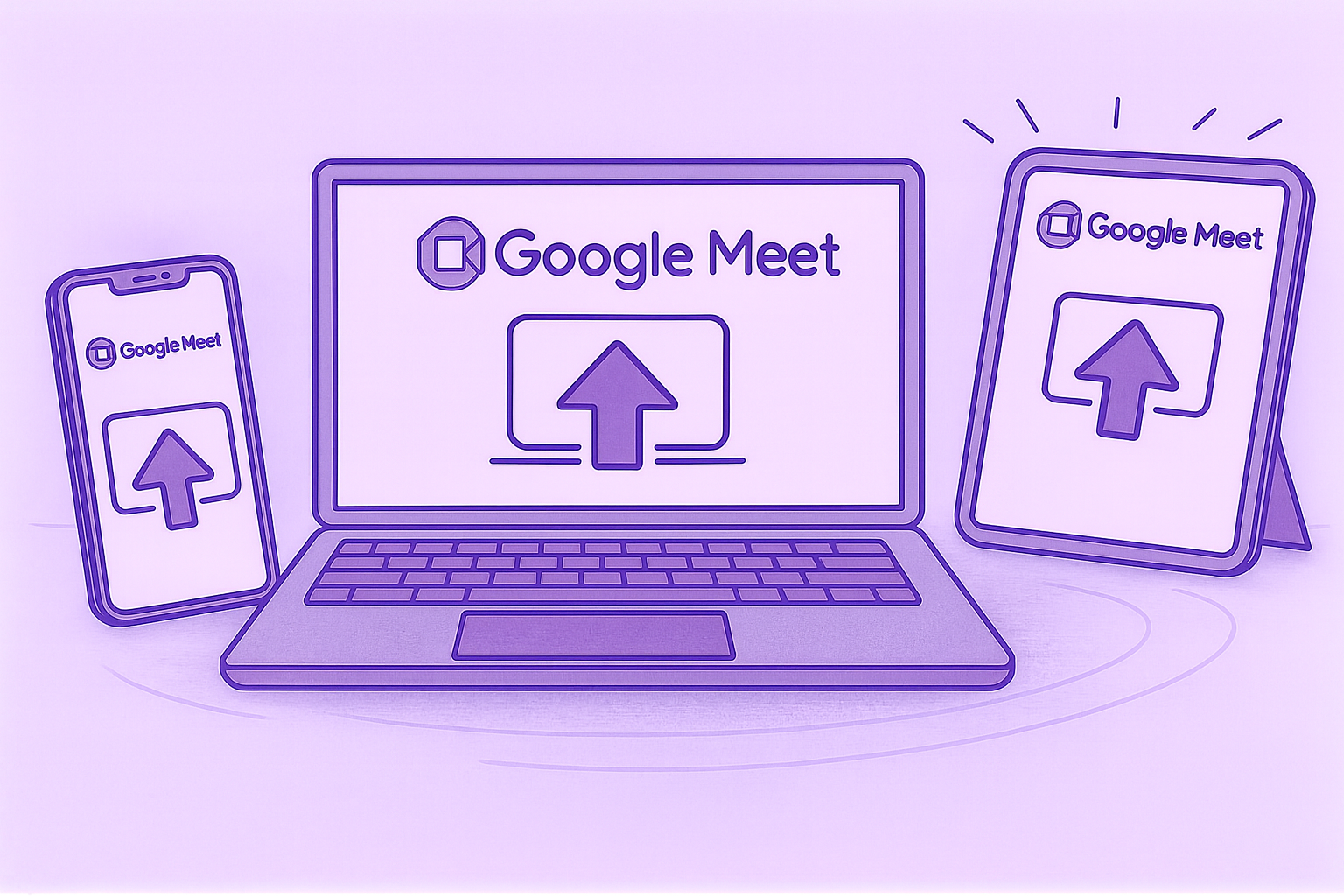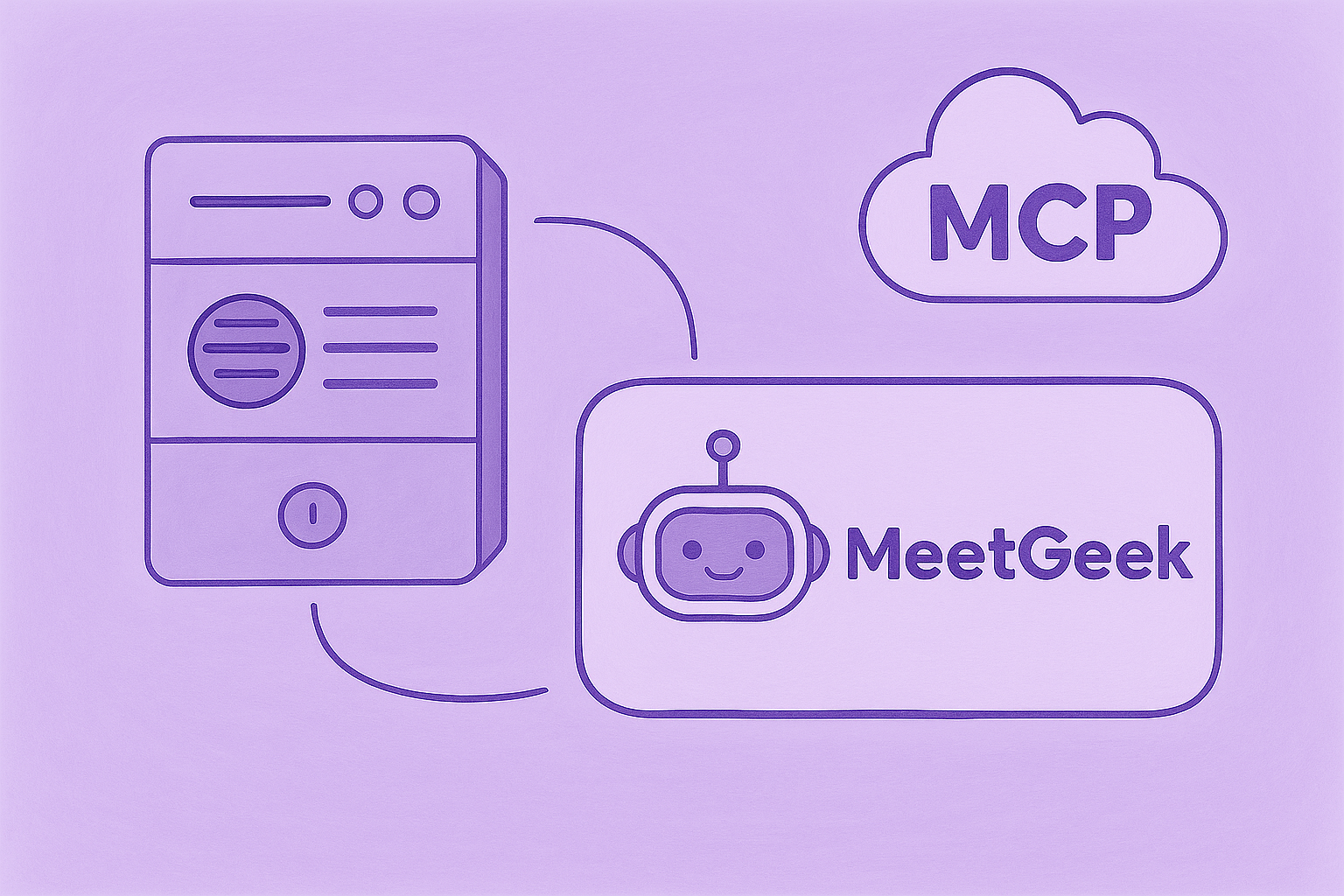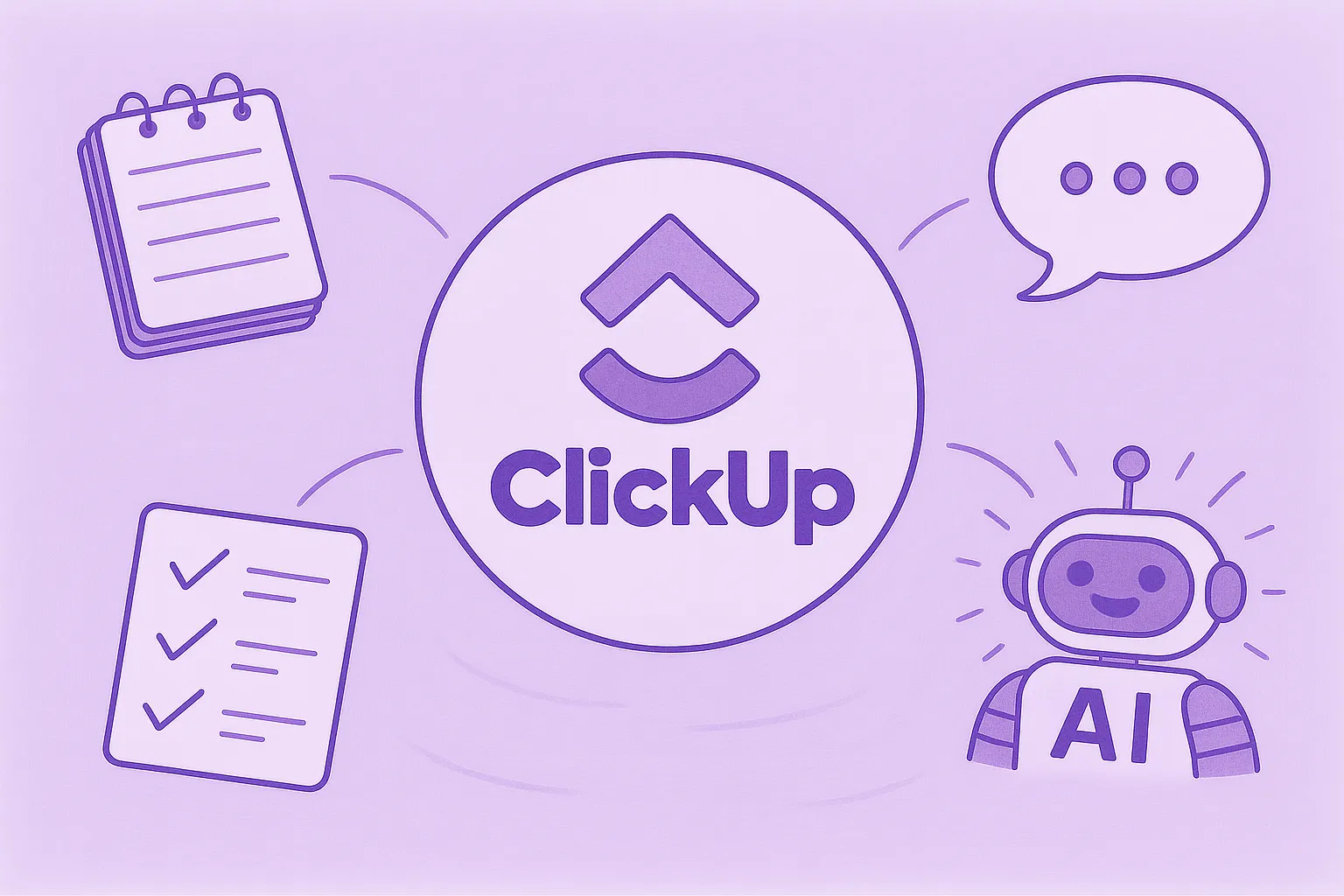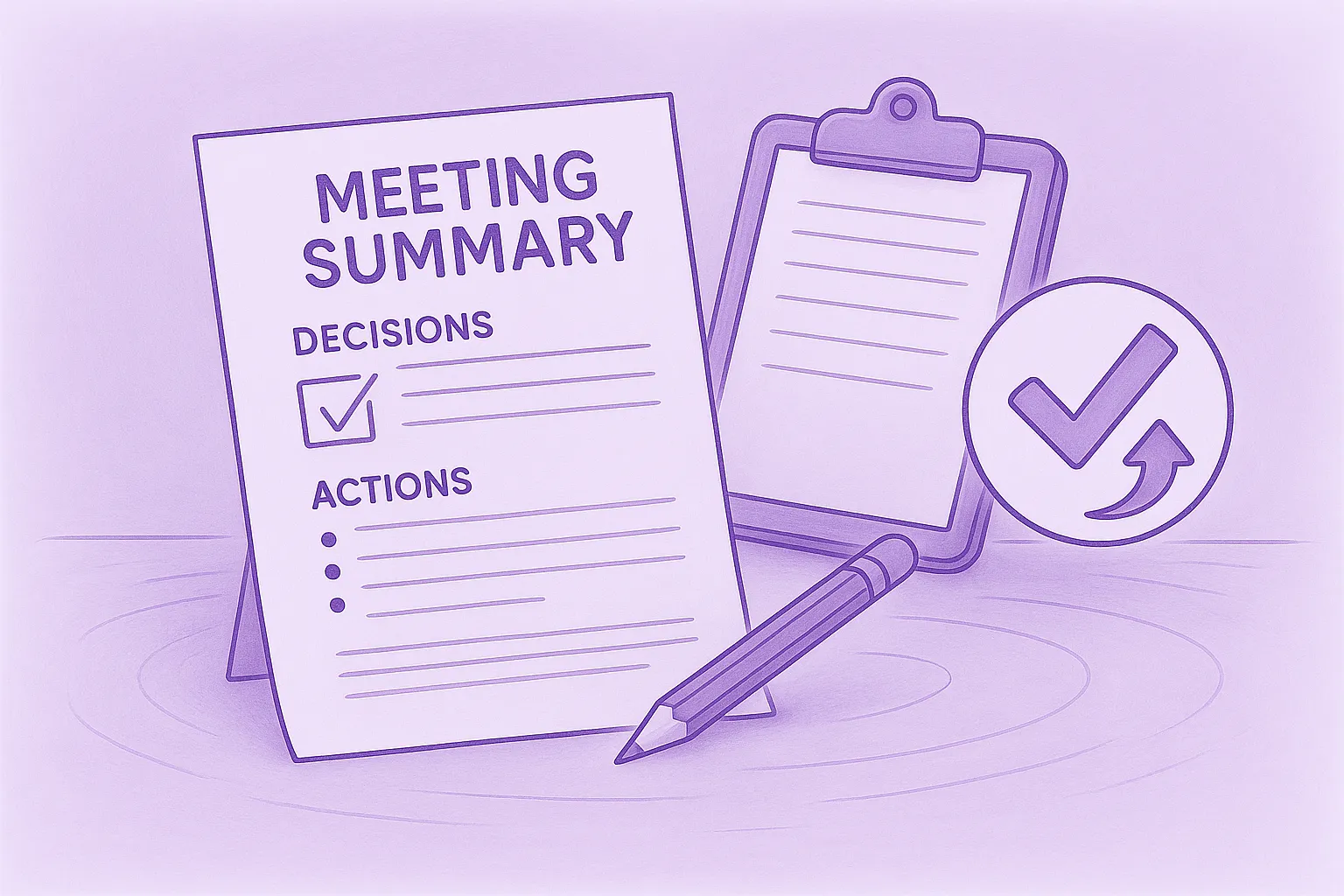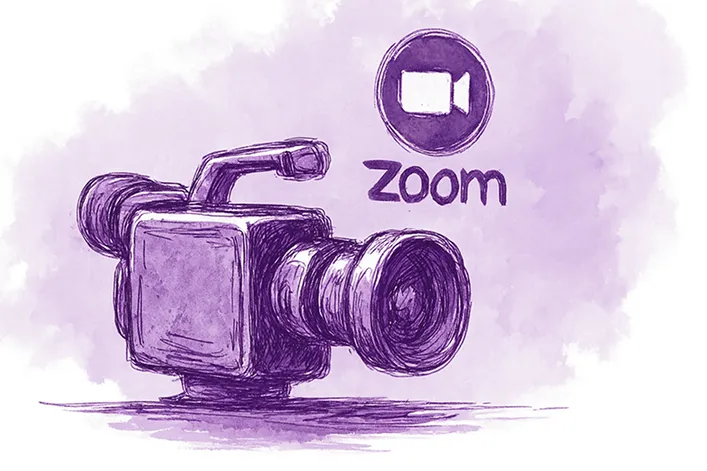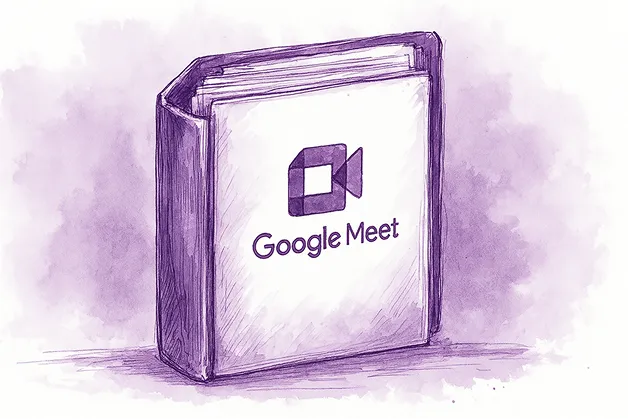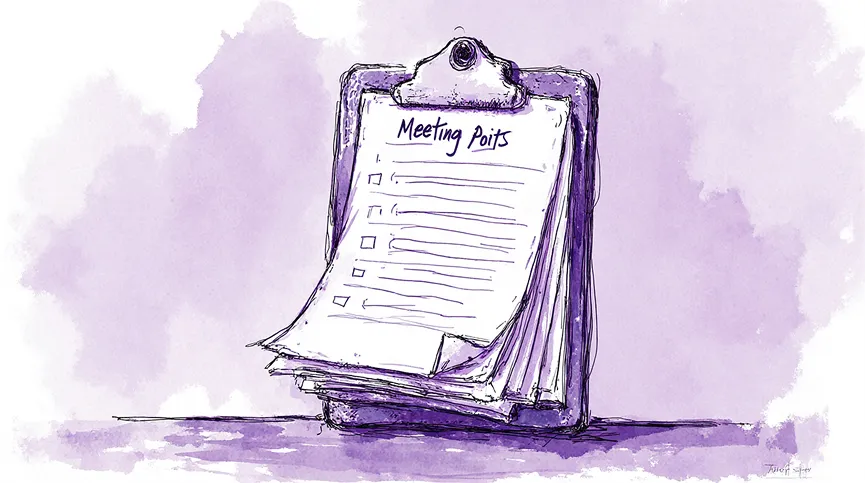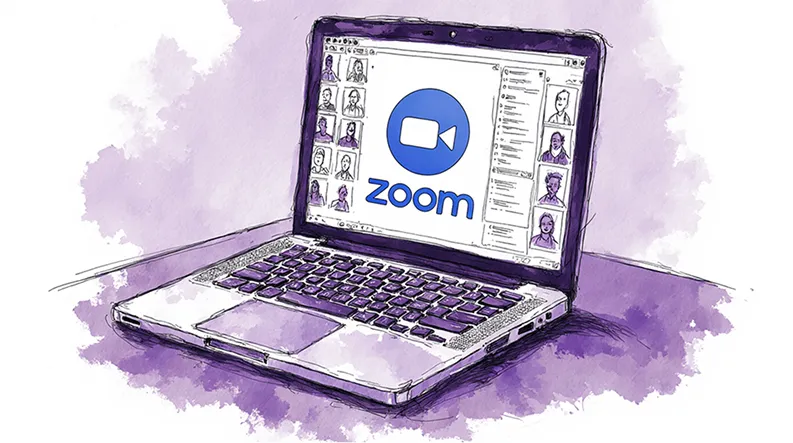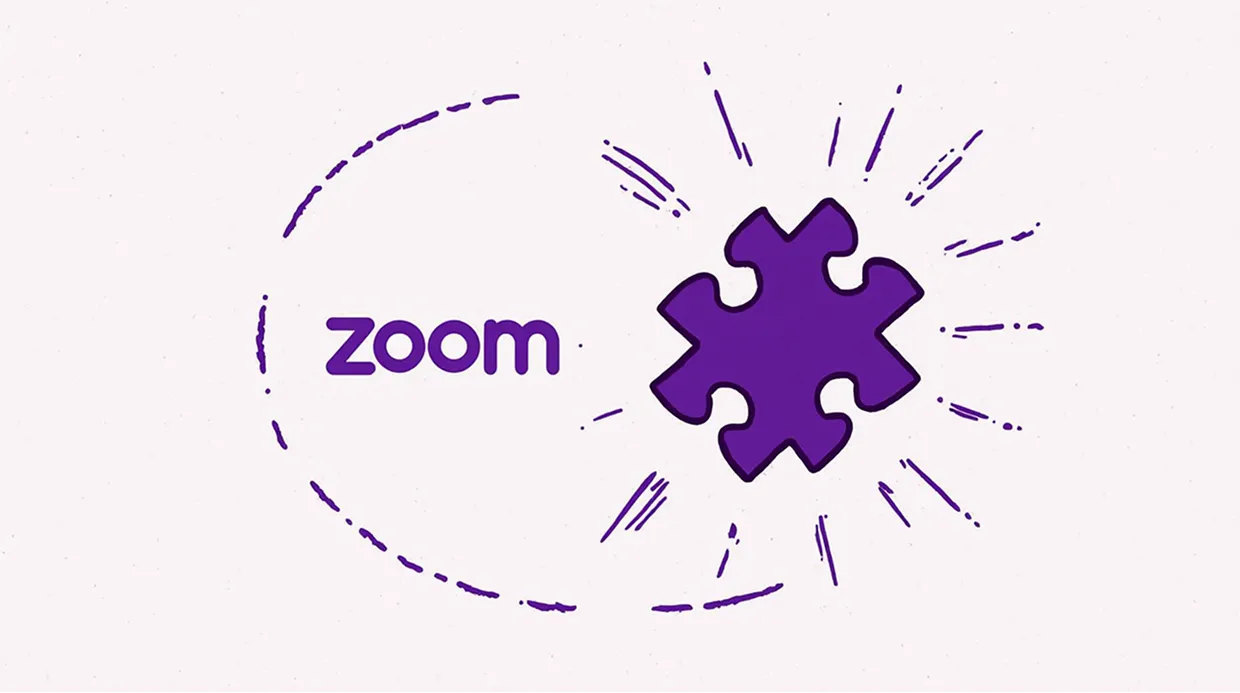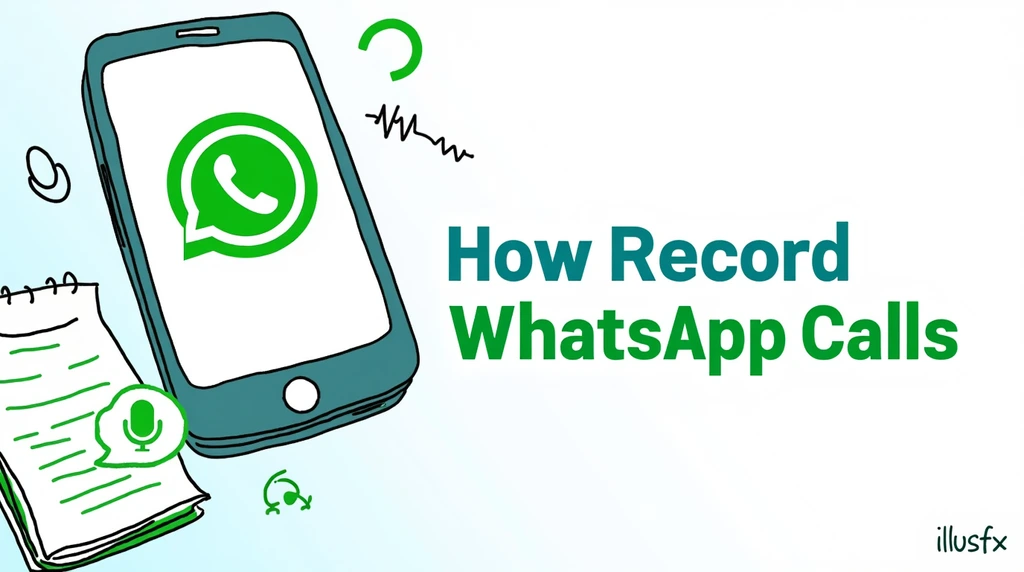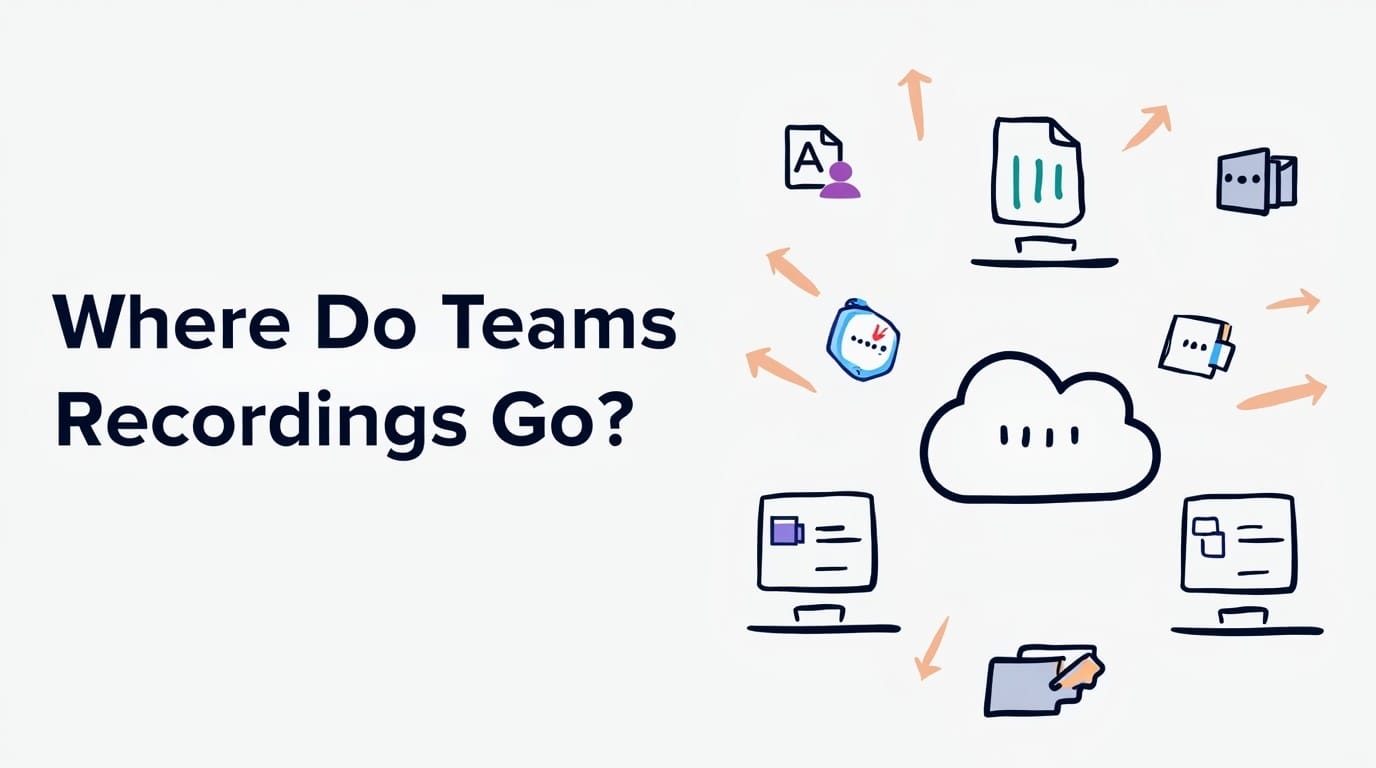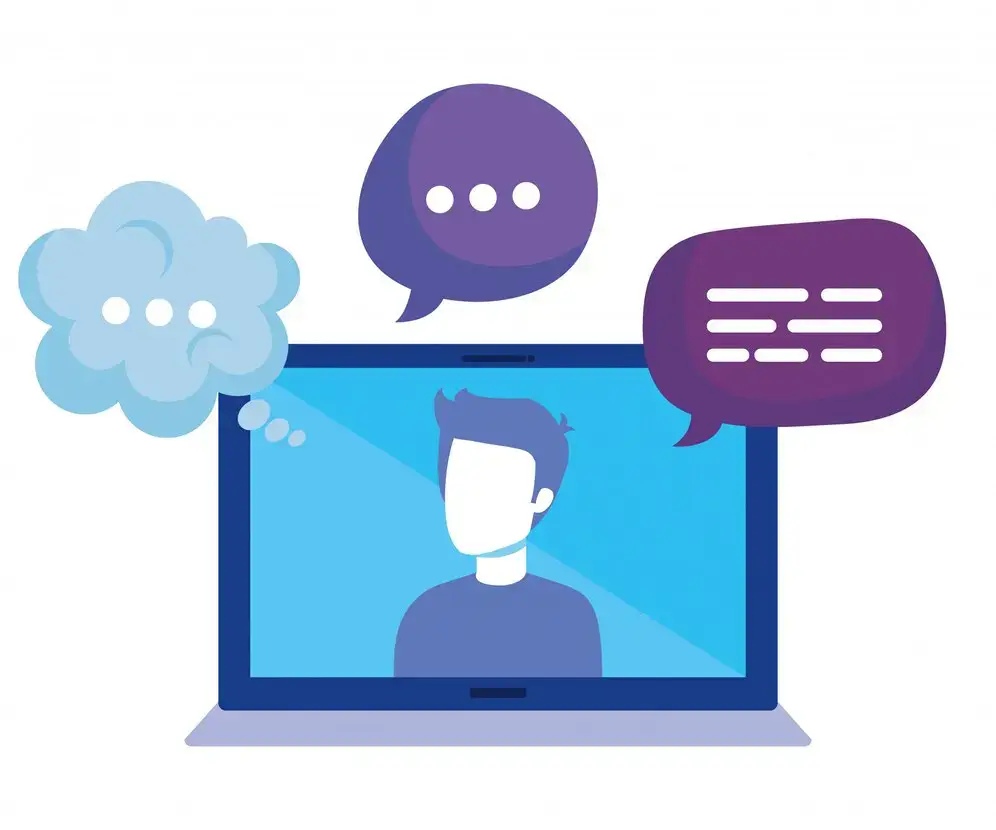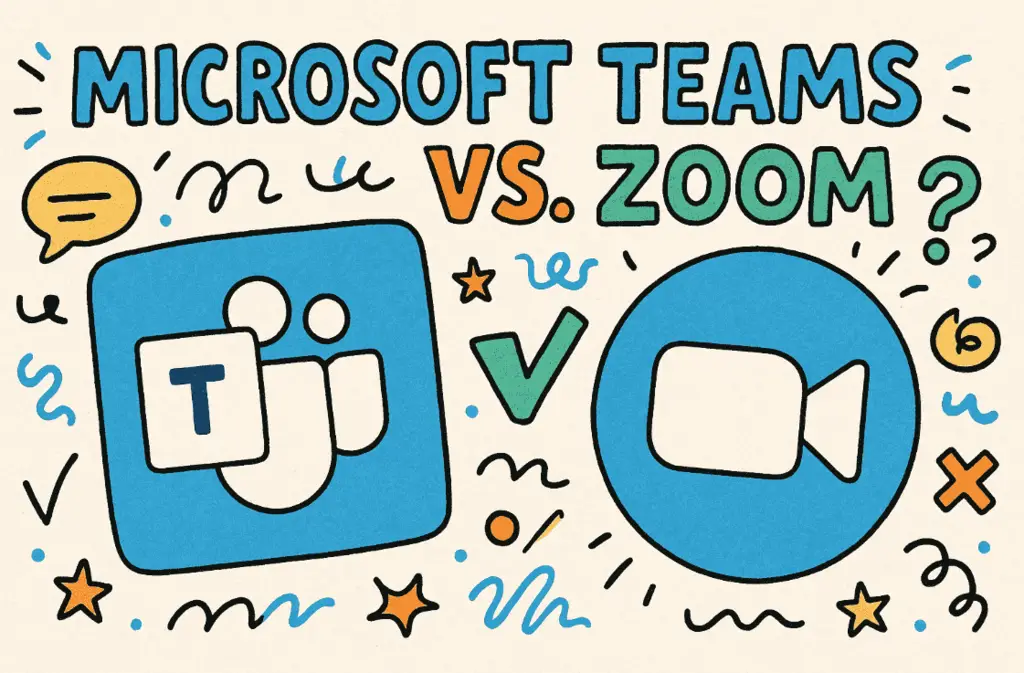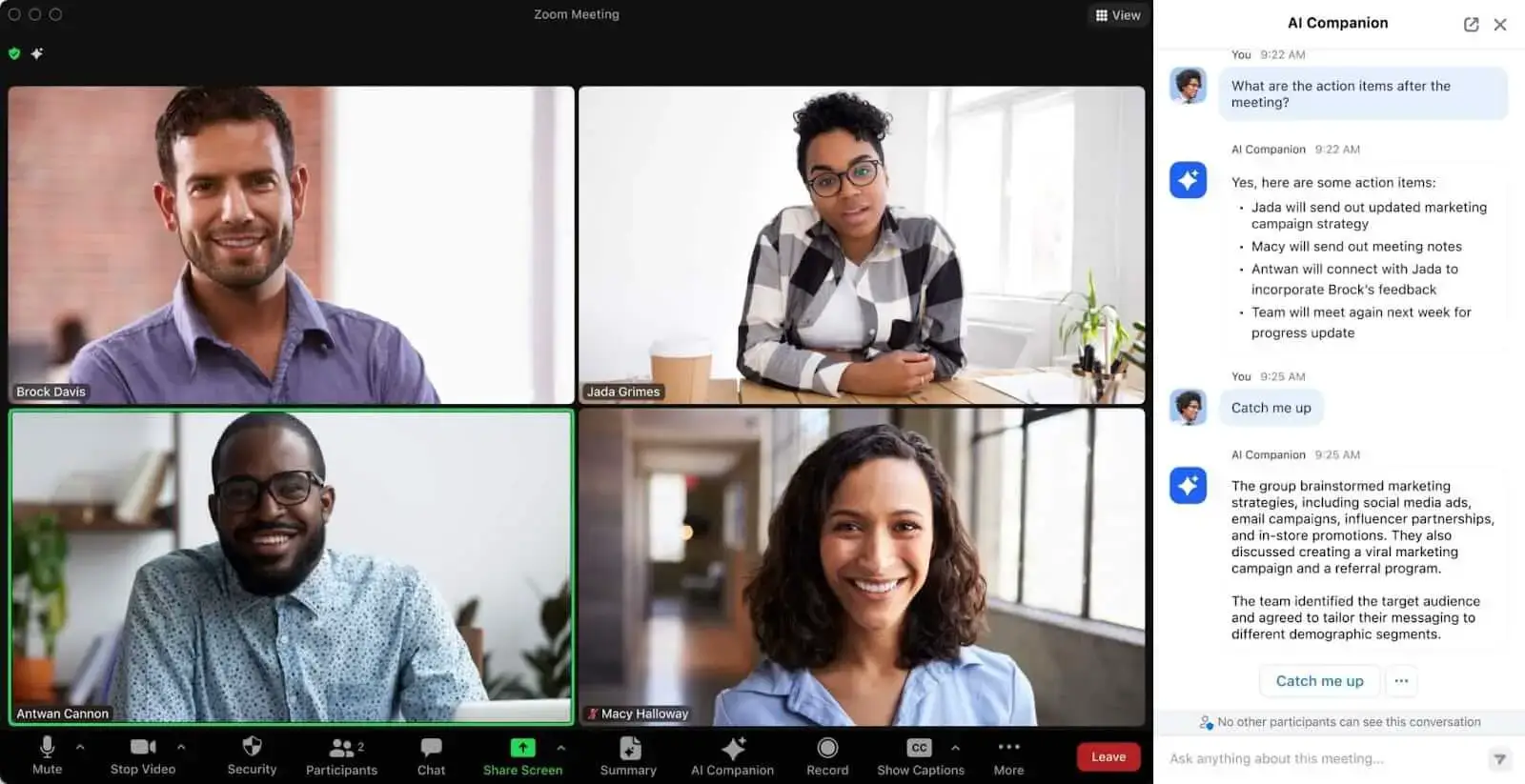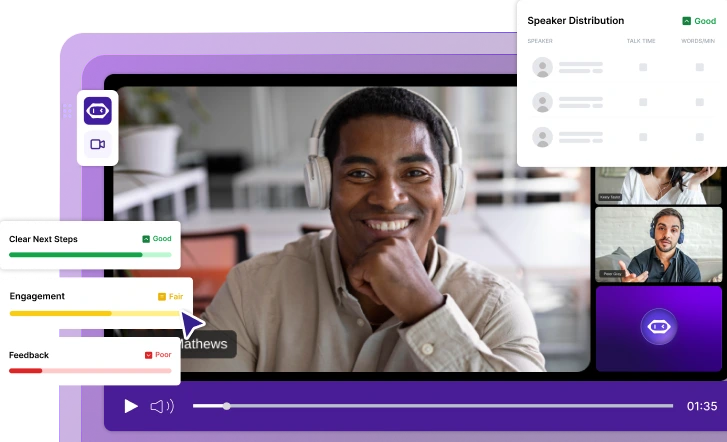Signification d'une réunion ad hoc et comment en organiser une
Découvrez le véritable sens des réunions ad hoc et apprenez à rendre les discussions spontanées plus ciblées et plus efficaces. Découvrez quand les conserver et les gérer.

✅ Free meeting recording & transcription
💬 Automated sharing of insights to other tools.

Les travaux se déroulent rarement exactement comme prévu. Les délais changent, les problèmes surgissent de nulle part et parfois une conversation rapide est la seule façon d'avancer. C'est là qu'entrent en jeu les réunions ad hoc : des discussions courtes et ciblées qui aident les équipes à prendre des décisions rapidement lorsque quelque chose ne peut pas attendre la prochaine réunion programmée.
Mais que signifie réellement une réunion ad hoc, et comment ces réunions impromptues peuvent-elles s'intégrer à une journée de travail bien remplie sans faire dérailler l'attention ? Dans ce guide, nous allons expliquer ce qui différencie les réunions ad hoc, quand les utiliser et comment les rendre productives
Que signifie une réunion ad hoc ?
Le terme ad hoc vient du latin et signifie « à cette fin ». Dans un contexte professionnel, il décrit une réunion organisée pour répondre à un besoin immédiat plutôt que pour quelque chose de planifié à l'avance.
Contrairement aux réunions planifiées, qui suivent un schéma récurrent et ont souvent un caractère officiel ordre du jour, les réunions ad hoc sont des réunions imprévues organisées à bref délai pour traiter des problèmes urgents ou prendre des décisions rapides.
Ces réunions ont tendance à être les suivantes :
- Bref et ciblé : Ils ne durent généralement que le temps nécessaire pour résoudre le problème.
- Orienté vers les objectifs : Chaque session comporte un objectif spécifique ou résultat souhaité.
- De petite taille : Seulement employés clés ou parties prenantes concernées sont invités.
- Flexible : Ils peuvent avoir lieu en personne, par chat ou par le biais d'un appel vidéo rapide.
Les exemples les plus courants sont les suivants :
- Une équipe marketing se réunit pour approuver un changement de dernière minute dans une campagne.
- Un chef de produit appelle une synchronisation rapide pour résoudre un problème urgent.
- Un responsable du support client réunissant quelques agents pour résoudre les problèmes critiques.
- Un coordinateur de projet fait le point sur des imprévus et attend avec impatience la prochaine réunion.
En résumé, une réunion ad hoc permet aux équipes de réagir rapidement à des situations inattendues qui nécessitent une attention et une prise de décision immédiates.
En quoi les réunions ad hoc diffèrent-elles des réunions ordinaires
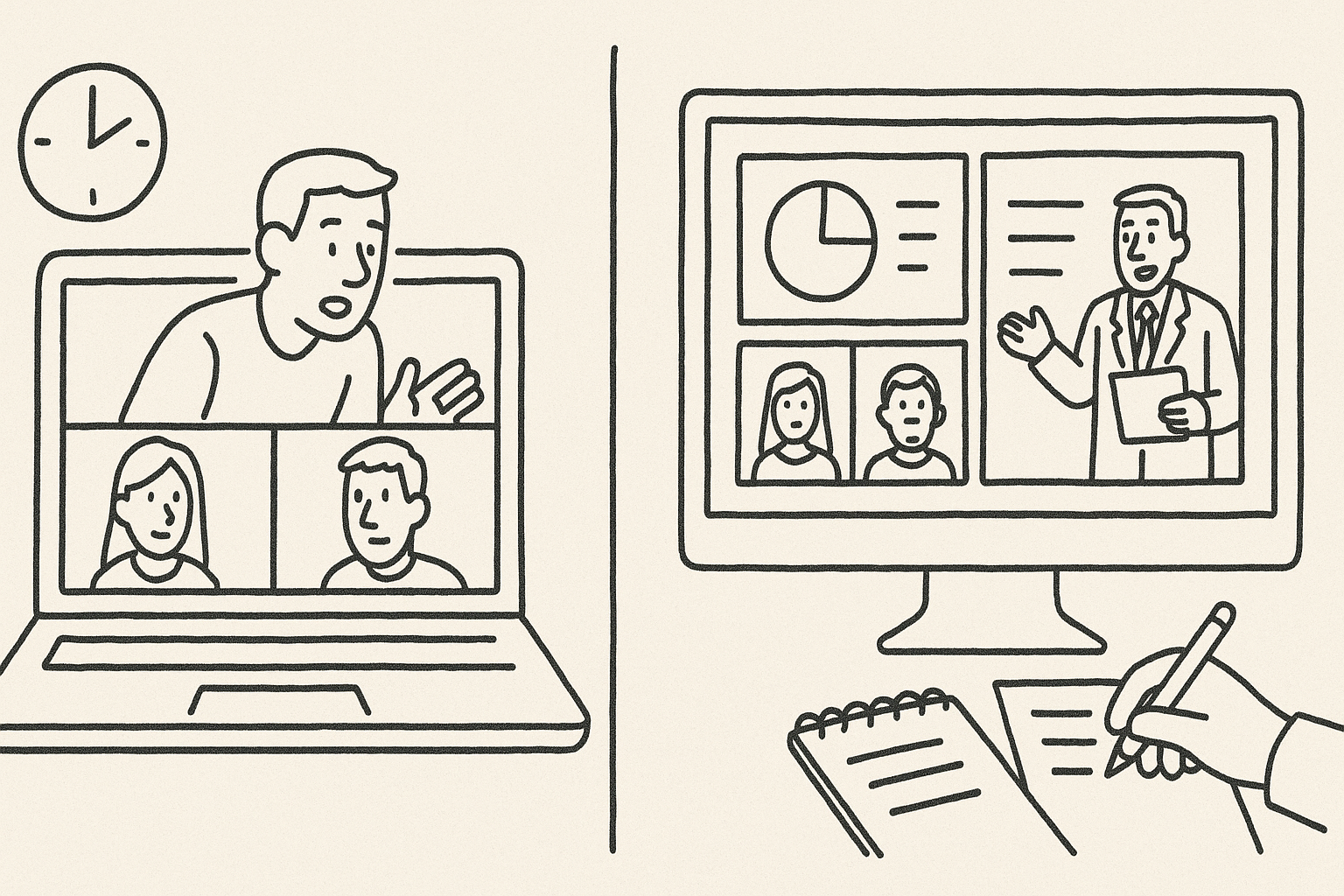
Les réunions régulières sont récurrentes et structurées. Ils suivent un horaire constant, ont prévu des conférenciers et impliquent souvent de longs agendas. Les réunions ad hoc, en revanche, sont réactives et flexibles.
Les principales différences sont les suivantes :
- Objectif : Les réunions ad hoc se concentrent sur les décisions urgentes, tandis que les réunions régulières examinent le long terme buts ou des mises à jour.
- Calendrier : Les réunions ad hoc ont lieu à bref délai ; les réunions programmées suivent une routine bien établie.
- Préparation : Les réunions régulières impliquent une planification détaillée et un ordre du jour officiel, tandis que les réunions ad hoc ont généralement un ordre du jour bref avec des objectifs spécifiques.
- Participants : Les sessions ad hoc n'impliquent généralement que les personnes qui possèdent l'expertise ou le pouvoir de décision nécessaires.
Les deux ont de la valeur, mais l'essentiel est de savoir quand les utiliser. Les réunions ad hoc permettent de résoudre rapidement les problèmes urgents, tandis que les réunions récurrentes permettent de maintenir l'alignement des équipes sur une longue période.
Pourquoi les réunions ad hoc sont importantes dans les équipes modernes
Les lieux de travail d'aujourd'hui dépendent de l'agilité. Le travail hybride et à distance étant désormais la norme, les équipes s'appuient souvent sur la collaboration en temps réel pour rester connectées et faire avancer les projets.
La plupart des réunions ad hoc rendent cela possible en donnant aux équipes distribuées un moyen de résoudre rapidement les problèmes au lieu d'attendre le prochain enregistrement programmé. Ils permettent également de prendre rapidement des décisions sur des questions critiques qui pourraient autrement ralentir les progrès et créer des blocages inutiles.
Dans le meilleur des cas, ces conversations spontanées peuvent donner lieu à des solutions créatives et encourager une communication ouverte. Lorsqu'ils sont gérés de manière réfléchie, ils améliorent la productivité de l'équipe et favorisent l'innovation, en particulier lorsqu'ils sont soutenus par des habitudes de communication claires et des outils appropriés pour saisir les résultats.
Les défis des réunions ad hoc
Bien que les réunions ad hoc soient utiles pour gérer des situations imprévues, elles comportent plusieurs défis.
- Interruptions liées à un travail ciblé : De fréquentes réunions impromptues peuvent perturber le travail en profondeur et empêcher les employés de rester concentrés.
- Absence de structure : Sans ordre du jour précis, ces sessions risquent de varier et de faire perdre du temps.
- Inefficacité temporelle : Lorsqu'elles se produisent trop souvent, même une brève réunion peut devenir une perte de temps.
- Suivi manqués : Sans documentation ou procès-verbaux de réunions, des décisions clés peuvent être oubliées.
Ces pièges peuvent facilement avoir une incidence négative sur le moral et la productivité. C'est pourquoi il est important de rendre les réunions ad hoc efficaces plutôt que réactives.
Comment MeetGeek vous aide à gérer efficacement les réunions ad hoc
MeetGeek fait de chaque réunion ad hoc, aussi spontanée soit-elle, l'occasion d'une communication claire et d'une action significative.
Lorsqu'un appel de dernière minute arrive, vous pouvez simplement coller le lien de la réunion dans la page Réunions à venir, et le bot de MeetGeek se joindra automatiquement pour enregistrer, transcrire et résumer la session.
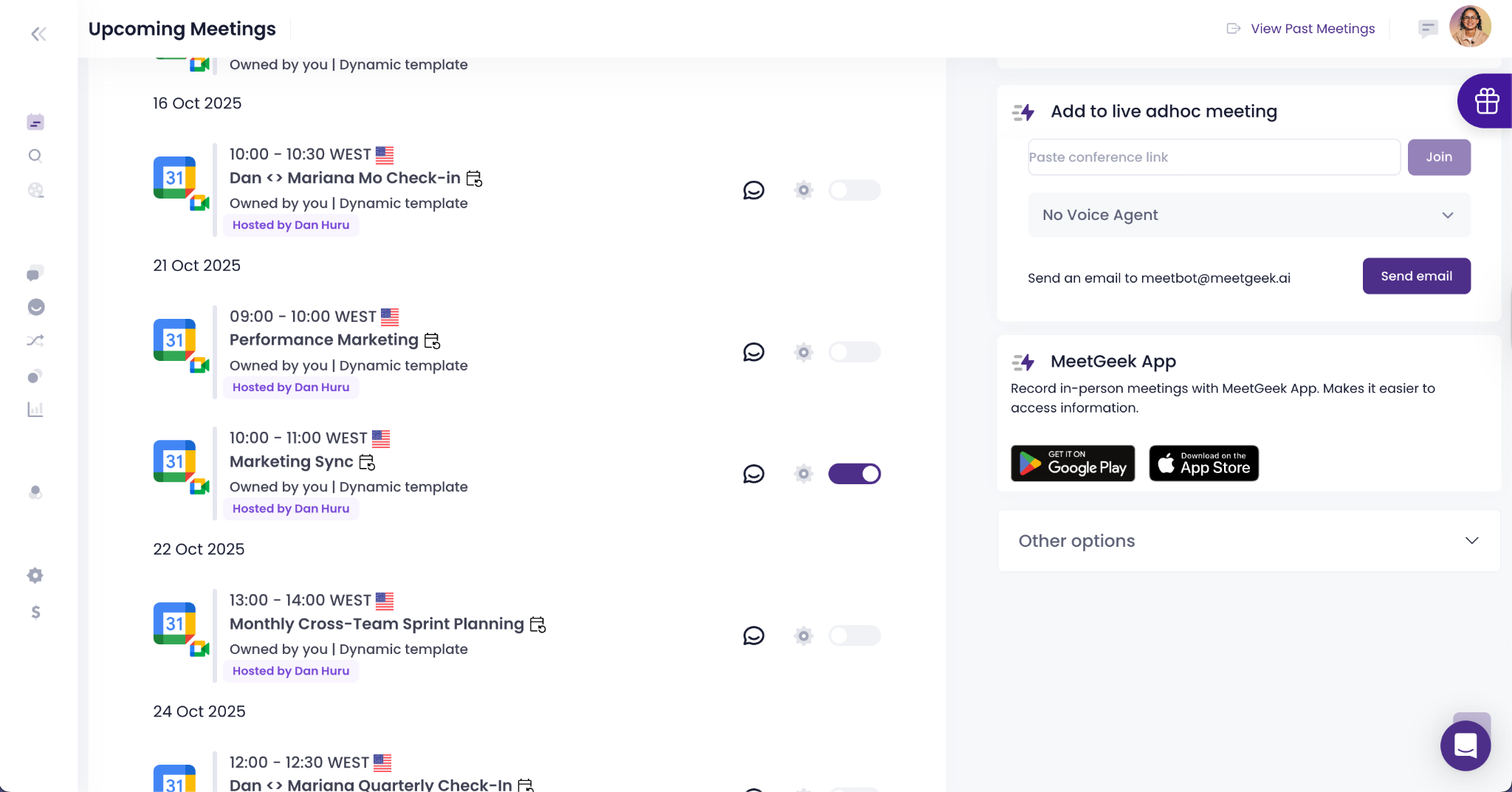
Cette fonctionnalité est particulièrement utile pour les réunions impromptues qui n'apparaissent pas sur votre calendrier mais qui doivent tout de même être documentées. Vous recevrez un compte rendu précis de la réunion et les points clés immédiatement après, afin que tout le monde soit informé et aligné.

Vous pouvez également partager instantanément des notes de réunion avec les parties prenantes qui n'ont pas pu y assister, afin que tout le monde reste aligné sans répéter les conversations.
Si la réunion a lieu directement dans votre navigateur, l'extension Chrome de MeetGeek facilite tout autant le processus. En un clic, vous pouvez commencer à enregistrer via le widget flottant, sans configuration ni planification.
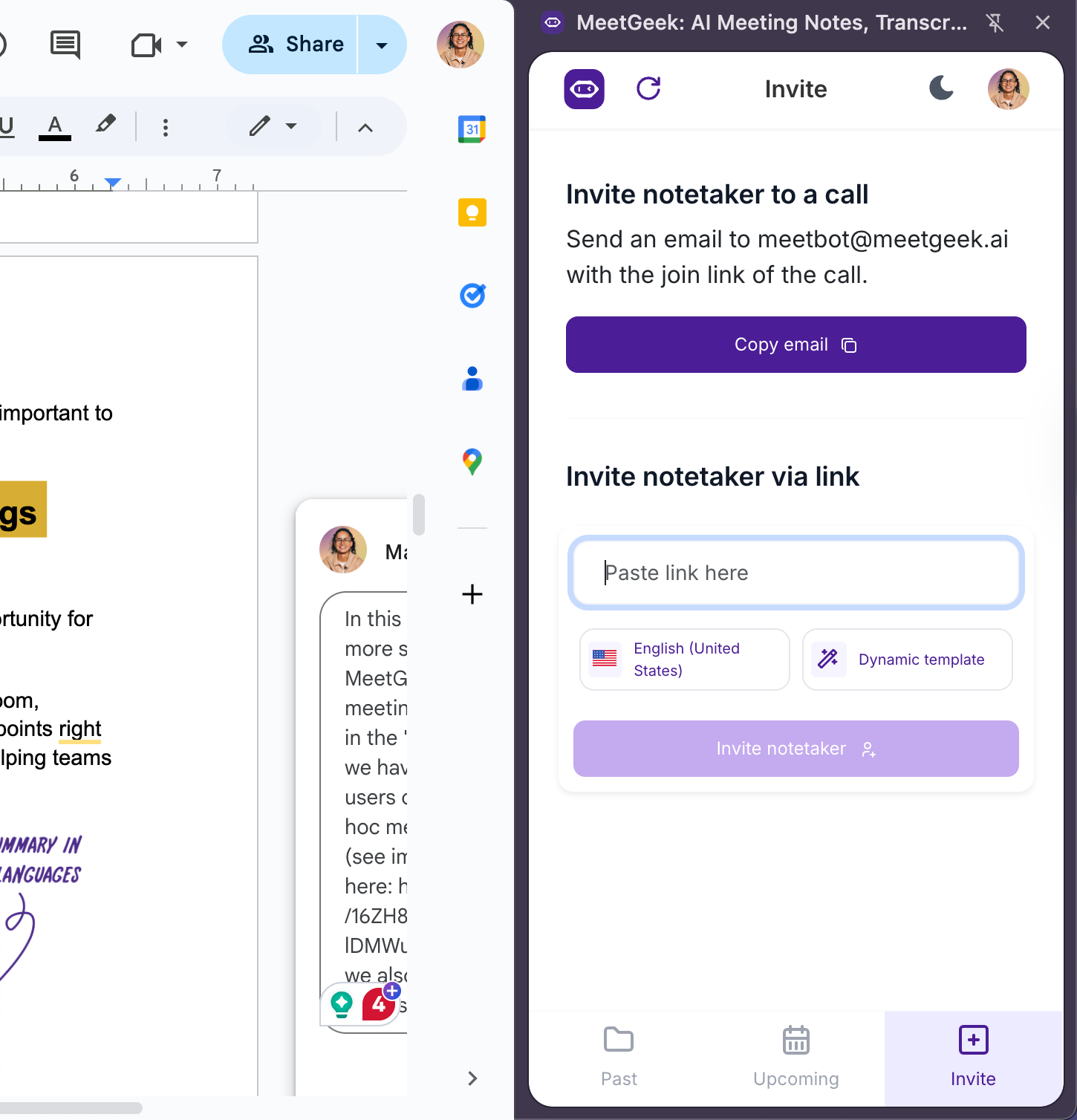
Chaque réunion imprévue est organisée et consultable dans MeetGeek, ce qui permet de revenir facilement sur les discussions, de suivre les résultats et de maintenir le contexte entre les projets.

Cela permet aux équipes de rester efficaces et concentrées, même lorsqu'elles gèrent des situations inattendues nécessitant une réponse rapide.
Quand devriez-vous organiser une réunion ad hoc ?
Toutes les discussions ne méritent pas une réunion, mais certains moments appellent une action immédiate. Ces réunions sont particulièrement adaptées aux situations où l'attente de la prochaine réunion planifiée pourrait ralentir les progrès ou aggraver un problème.
1. Quand une décision rapide est nécessaire
Parfois, les projets atteignent un point où une décision ne peut pas attendre. Peut-être qu'un client a besoin d'une approbation urgente ou qu'un fournisseur a modifié son calendrier de livraison. Dans ces cas, une réunion ad hoc donne aux décideurs l'occasion de discuter immédiatement de la question et de se mettre d'accord sur les prochaines étapes.
Ce type de prise de décision rapide permet de faire avancer le travail et d'éviter que de petits retards ne se transforment en revers plus importants. Une brève réunion avec les employés clés est souvent plus efficace qu'une longue courriel réponse en chaîne ou différée.
2. Lors de la résolution d'une crise ou d'un problème
Les crises n'attendent pas les créneaux prévus dans le calendrier. Lorsqu'un système tombe en panne, qu'une campagne échoue ou qu'un client soulève un problème urgent, les équipes doivent se réunir rapidement. Une réunion ad hoc réunit les bonnes personnes autour d'une même conversation, ce qui permet d'obtenir une réponse immédiate.
Il s'agit d'un espace permettant d'attribuer les responsabilités, de définir les mesures de rétablissement et de s'assurer que chacun comprend son rôle dans la résolution du problème critique. Dans de tels moments, la collaboration en temps réel peut faire la différence entre une reprise rapide et une interruption prolongée.
3. Pour un alignement urgent des projets
Les projets évoluent souvent dans des directions imprévisibles. Les délais changent, les dépendances se chevauchent ou de nouvelles informations modifient les priorités. Dans ces situations, une réunion ad hoc courte et ciblée aide les principales parties prenantes et les membres concernés de l'équipe à s'aligner sur ce qui compte le plus.
C'est l'occasion de supprimer les blocages, d'ajuster les délais et de recentrer tout le monde sur le résultat souhaité. Sans ce type d'alignement, une mauvaise communication peut facilement entraîner une duplication du travail ou le non-respect des délais.
4. Pour réfléchir à des idées urgentes
Les réunions ad hoc ne visent pas toutes à résoudre les crises ; certaines visent à saisir les opportunités. Lorsqu'une nouvelle idée fait surface ou qu'une question urgente nécessite une nouvelle réflexion, une réunion spontanée peut permettre de réunir le bon mélange de points de vue pour susciter des solutions créatives tout en brainstorming.
Comme ces réunions sont informelles et courtes, les participants ont tendance à partager leurs idées plus librement qu'ils ne le feraient lors de réunions régulières avec des conférenciers planifiés et des ordres du jour longs. Cette flexibilité entraîne souvent une innovation plus rapide et des prochaines étapes pratiques qui peuvent être mises en œuvre immédiatement.
Comment organiser une réunion ad hoc efficace
Même si les réunions ad hoc sont organisées rapidement, elles ne doivent pas nécessairement être chaotiques. La clé pour les rendre productifs réside dans la structure, la clarté et la concentration. Quelques étapes simples peuvent aider les équipes à tirer le meilleur parti de ces discussions spontanées.
1. Clarifiez l'objectif avant de commencer
Avant d'envoyer une invitation, prenez le temps de définir pourquoi la réunion a lieu. Quel problème essayez-vous de résoudre ? Quels objectifs spécifiques devraient être atteints d'ici la fin ? Cette étape donne le ton à l'ensemble de la conversation et aide tout le monde à se préparer.
En énonçant clairement l'objectif, qu'il s'agisse de prendre une décision, d'attribuer des tâches ou de résoudre un problème urgent, vous évitez les discussions inutiles et vous vous concentrez sur le résultat souhaité.
2. N'invitez que les participants essentiels
Tout le monde n'a pas besoin d'être présent à chaque réunion. Limitez la liste des invités aux seules personnes qui peuvent contribuer directement à la conversation : personnes possédant l'expertise nécessaire, l'autorité décisionnelle ou les informations pertinentes.
Un groupe plus restreint signifie des discussions plus rapides et des résultats plus clairs. Il respecte également le travail ciblé de chacun et évite les interruptions inutiles pour ceux qui n'ont pas besoin de participer.
3. Faites en sorte que la réunion soit courte et ciblée
Les réunions ad hoc ayant souvent lieu pendant des horaires chargés, la gestion du temps est essentielle. Prévoyez 15 à 30 minutes, selon la complexité du sujet. Commencez à l'heure, suivez le bref ordre du jour et évitez de vous égarer.
Fixer une limite de temps permet aux participants de rester concis et engagés, tout en veillant à ce que la réunion n'interfère pas avec d'autres priorités. Des sessions courtes et ciblées ont tendance à produire de meilleures décisions et à minimiser les pertes de temps.
Si vous souhaitez en savoir plus sur la réduction des heures de réunion, consultez cette étude de cas sur la façon dont SocialBee a réduit le sien de 20 % avec l'aide de MeetGeek !
4. Utilisez un micro-agenda ou une liste de questions clés
Même s'il s'agit de réunions imprévues, le fait de disposer d'un guide simple permet de les organiser. Préparez quelques points ou questions clés à aborder. Un micro-agenda est un outil qui vous permet de rester concentré et de vous assurer de couvrir tout ce qui est important.
Par exemple, commencez par le problème actuel, identifiez les causes, puis convenez des étapes suivantes. Ce petit effort permet d'éviter toute confusion et de maintenir la discussion axée sur les résultats.
5. Prenez des notes ou utilisez MeetGeek pour recueillir automatiquement des informations
La documentation est importante, même lors d'une réunion rapide. Au lieu de vous fier à la mémoire, utilisez des outils de gestion de projet ou MeetGeek pour documenter les décisions, les principaux points à retenir et les actions de suivi.
MeetGeek enregistre et résume automatiquement vos réunions ad hoc, ce qui vous permet de passer en revue les points clés ultérieurement et de les partager avec les parties prenantes concernées. Cela permet non seulement d'éviter les problèmes de communication, mais également d'assurer la continuité lorsque le sujet refait surface dans les discussions futures.
6. Terminez en définissant clairement les prochaines étapes et en vous appropriant
Une réunion ad hoc efficace doit toujours se terminer clairement. Avant de terminer, récapitulez ce qui a été discuté et confirmez qui est responsable de chaque action.
Fixez des délais et assurez-vous que tout le monde est d'accord sur son rôle. Ce bref récapitulatif renforce la responsabilisation et évite toute confusion par la suite. Quelques minutes consacrées à l'alignement à la fin peuvent vous éviter des heures de retour en arrière.
Alternatives aux réunions ad hoc
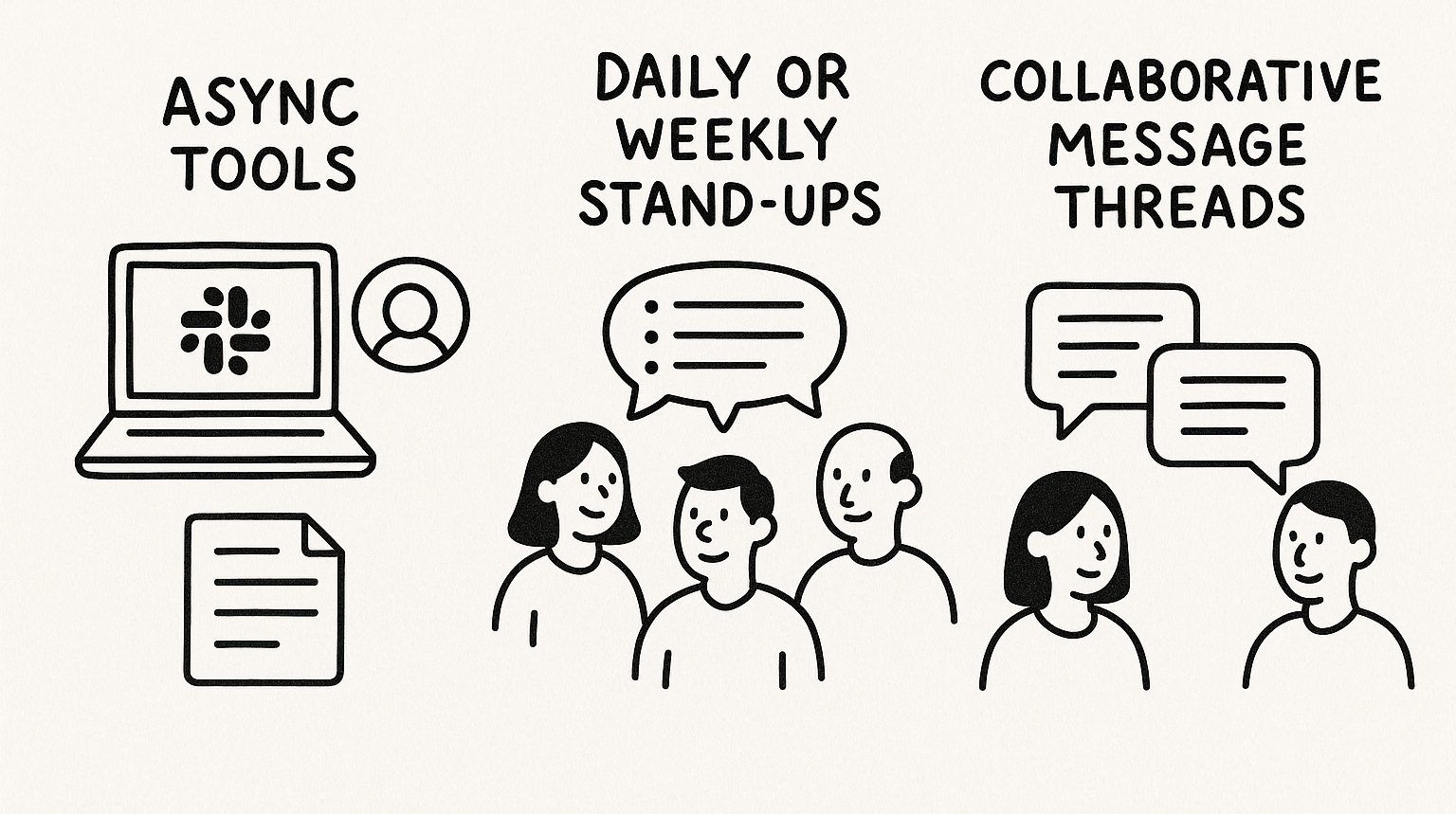
Bien que les réunions ad hoc soient utiles pour résoudre des problèmes urgents ou inattendus, toutes les situations ne nécessitent pas de réunir des personnes en temps réel. C'est là que les alternatives entrent en jeu. Ces méthodes permettent aux équipes de collaborer efficacement sans interrompre le travail en profondeur ni planifier des appels inutiles.
Outils asynchrones
Des outils tels que Slack, Loom et Notion aident les équipes à partager des mises à jour et des idées sans que tout le monde soit connecté en même temps. Avec Slack, communication asynchrone outil, vous pouvez publier des mises à jour rapides ou des questions sur des canaux dédiés et identifier les principales parties prenantes lorsque des informations sont nécessaires pour résoudre rapidement les problèmes.
Loom permet aux utilisateurs d'enregistrer de courts messages vidéo pour expliquer visuellement des sujets complexes, tandis que Notion propose des pages partagées pour suivre les progrès, réfléchir ou gérer des documents collaboratifs.
Stand-ups quotidiens ou hebdomadaires
Ces réunions constituent une autre alternative aux réunions ad hoc constantes. Ces réunions programmées offrent un espace régulier pour des mises à jour rapides, des examens des tâches et un alignement sur les objectifs. Parce que tout le monde sait quand ils se produisent, ils éliminent le besoin de réunions ponctuelles constantes tout au long de la semaine. Les garder brèves et structurées en mettant l'accent sur les progrès, les obstacles et les prochaines étapes permet de maintenir une communication claire tout en respectant le temps de chacun.
Fils de messages collaboratifs
Les fils de messages fonctionnent également bien pour maintenir la clarté sur des sujets en évolution. Les équipes peuvent utiliser des canaux partagés ou un logiciel de gestion de projet pour échanger des mises à jour, documenter les décisions clés et résoudre les problèmes de manière asynchrone. Cette approche crée un enregistrement écrit des conversations et des décisions, ce qui facilite le suivi ultérieur du contexte et garantit qu'aucune information n'est perdue.
Transformer les réunions ad hoc en résultats significatifs
Les réunions ad hoc constituent un élément essentiel du lieu de travail collaboratif d'aujourd'hui. Ils aident les équipes à faire face à des situations inattendues, à prendre des décisions urgentes et à résoudre des problèmes qui ne peuvent pas attendre. Mais trop d'entre elles peuvent entraîner un épuisement professionnel, une perte de temps et une mauvaise planification.
En fixant des objectifs clairs, en gardant un ordre du jour précis et en documentant les décisions clés, les équipes peuvent rendre productives les réunions les plus imprévues. Et avec MeetGeek, chaque conversation devient une source de clarté ; elle est capturée, organisée et facile à partager.
Essayez MeetGeek gratuitement et transformez vos réunions ad hoc en sessions organisées, pertinentes et exploitables.
Questions fréquemment posées
Que signifie « ad hoc » dans le contexte d'une réunion ?
Il s'agit d'une réunion organisée dans un but précis, souvent une réunion courte et imprévue destinée à traiter des problèmes urgents ou à prendre des décisions urgentes.
Combien de temps doit durer une réunion ad hoc ?
Vous devez faire en sorte que les réunions ad hoc soient courtes, généralement moins de 30 minutes. Une brève réunion permet de résoudre les problèmes de manière efficace sans interrompre un travail approfondi.
Comment savoir si vous organisez trop de réunions ad hoc ?
S'ils ont lieu plusieurs fois par semaine ou couvrent les mêmes sujets à plusieurs reprises, c'est le signe que vous avez trop de réunions spontanées et qu'il est temps de passer à des réunions planifiées ou à des mises à jour asynchrones.
Les réunions ad hoc peuvent-elles être enregistrées ou transcrites ?
Oui En utilisant MeetGeek, vous pouvez enregistrer, transcrire et résumer automatiquement les réunions ad hoc, en conservant les points clés et les suivis à des fins de référence.
.avif)





